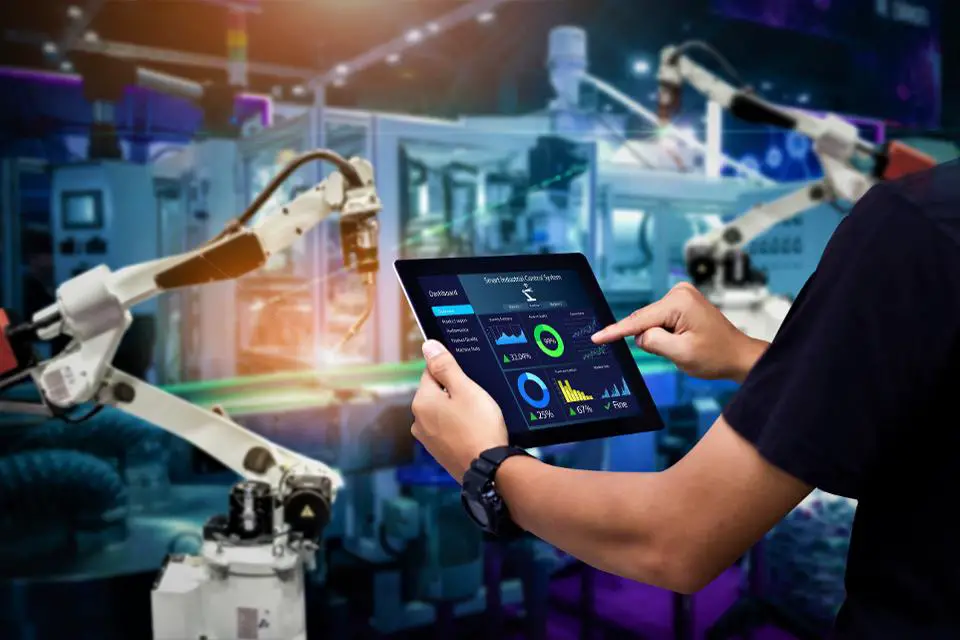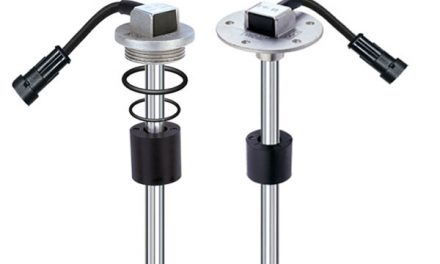The world is experiencing a new shift in the manufacturing processes. Businesses are taking advantage of the latest trends in technology to speed up their manufacturing process, and create products that are tailor made to suit the needs of their clients. This article explains about technology in smart factories.
Before we explain smart factory technology, we first need to define smart factory technology and gain an appreciation of Industry 4.0.
Table of Contents
What is Smart Factory Technology?
This is defined as a highly digitalized and connected environment where machinery and equipment are able to improve processes through automation and self-optimization. The benefits also extend beyond just the physical production of goods and into functions like planning, supply chain logistics, and even product development.
What is Industry 4.0?
Industry 4.0 is the fourth revolution in manufacturing that promotes the computerization of industrial industries such as manufacturing. The goal is to create the smart factory.
This smart factory has the following characteristics:
- Adaptability
- Resource efficiency
- Ergonomics
- Integration of customers and business partners in the business and value process
Companies that use the smart factory technology have the following things in common:
- Agile teams with domain
- Analytics
- Internet of Things (IoT) and software development expertise
- A common data or IoT platform
- Use of advanced algorithms such as machine learning, data analytics and artificial intelligence
The confluence of a range of technologies will shift manufacturing away from the old, traditional process practices. These processes included lowest labour costs and slow, unreliable machinery. The new range of technologies included will be more personalised, automated, reliable, and will consist of localized value chains, based on customer need.
These smart factories will make a great use of the following:
- Latest generation sensors that are distributed along the supply chain.
- Wireless connections, during product assembly and long distance interactions with them.
- Elaboration of a great amount of data to control all phases of construction, distribution and usage of a product.
Industry 4.0 optimises the computerisation of Industry 3.0
The introduction of industry 3.0 was disruptive due to the introduction of the new technology, computers. Industry 4.0 which aims to create the smart factory uses the computers that were already introduced in industry 3.0. It then takes advantage of this pre-existing computer technology and takes it a step further through introducing the following smart factory technologies: big data analytics, cloud computing IoT and machine learning.
Smart Factory Trends
1. Collaborative Robots will Complement Workforces
Artificial intelligence, machine learning, big data analytics and other smart factory technologies will be present in smart factories, and these will work alongside workers who are in the industries. This will boost production in the production process. Companies will make use of machine learning scientists to check the performance of the machines present. Artificial intelligence engineers will also be used to check the production process, and through collaborating with the electrical & electronic engineers, the production process can be made more efficient.
In addition, more job roles will be created e.g. more machine learning engineers will be needed to manage the ever increasing data produced by the smart devices present in the smart factories.
2. Robotics as a Service (RaaS)
This idea involves companies paying a subscription fee for robots instead of buying the robots. This will make it quite cheap for small smart factories to use robots in their production process. The company Kuka is already taking this idea to a whole new level. This company is planning not only to introduce RaaS, but to introduce the Smart Factory as a Service concept. This will allow them to rent out entire factories, and allow companies such as automakers to reduce upfront investment costs, offload risk and reduce time to market for some manufactured products.
3. Edge Computing
This technology will see itself in smart factory technologies in the very near future. This will be used to increase the data and real time analysis requirements. Data will be processed and stored as close as possible to the hardware critical to the operations of the smart factory. This includes devices such as generators, critical process sensors, and pumps.
4. Cyber security
The traditional manufacturing methods use computers, but most have limited security. This is because cyber security was not really seen as a priority. Technology in smart factories will heavily rely on the internet, and therefore there will be a great need for cyber security to be ramped up. There will also be a growing demand of cyber security professionals.
Examples of Smart Factory Technology
1. Ocado
This is an example of a manufacturer using smart factory technology. This is the largest online only grocery delivery company in the United Kingdom. It has warehouses which are heavily automated with robot arms that can pick produce, as well as other robots that can pack and shift boxes faster than human can. This company is also investing heavily in self-driving vehicles to be used to deliver goods to their customers. It has a “Second Hands” programme to develop humans to work alongside humans in order for the robots to learn and predict employee actions.
2. Whirlpool
This is an appliance manufacturer using smart factory technology. Whirlpoool uses this smart factory technology to greatly reduce the waste the company sends to the landfills. It uses an analytics platform across all of its facilities to reveal the amount of waste generated, together with usage data about electricity water and more. The data is available via customisable, web based dashboards.
3. Hirotec
This is an auto parts manufacturer. It has annual revenues over $1 billion. As a result, this company is very much aware that planned downtime is a major challenge. In some cases planned downtime costs $361 a second.
This company wanted to reduce downtime and through a mix of IoT and cloud based technologies, as well as small, robust servers on its factory floors, data was generated. This analytics data was then processed using machine learning algorithms. After running three pilots of its IoT platform and reviewing the data, this company was able to achieve a 100 percent reduction in manual inspection time for its systems.
Conclusion
This article explained the meaning of the term smart factory technology. The industry 4.0 was introduced as this new method of manufacturing has been created to create the smart factory. Relevant examples were given.
We hope you now see how exciting technology is making our future of work.






